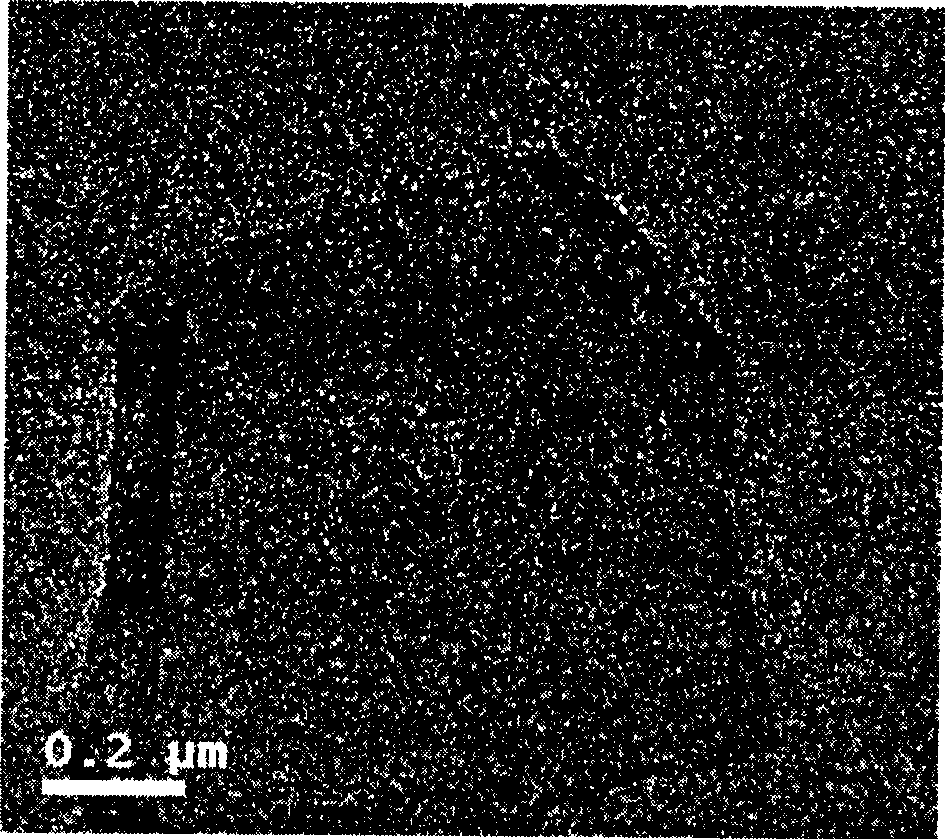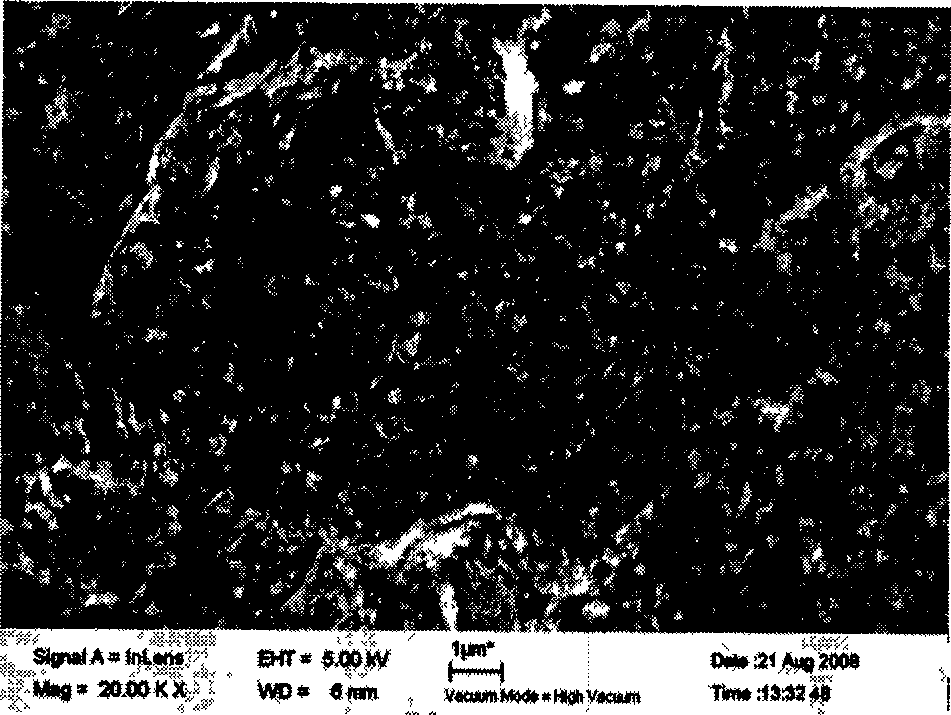Mono-layer graphite and polymer compound material and preparation and application thereof
A technology of single-layer graphite and composite materials, applied in the direction of conductive materials dispersed in non-conductive inorganic materials, conductive/antistatic filament manufacturing, etc., can solve the difficulties in the preparation and purification of carbon nanotubes, difficulty in uniform dispersion, and cost Advanced problems, to achieve the effect of light weight, easy heat dissipation, good molding processability
- Summary
- Abstract
- Description
- Claims
- Application Information
AI Technical Summary
Problems solved by technology
Method used
Image
Examples
Embodiment 1
[0030] Single-layer graphite was prepared according to the method reported in the literature (Carbon, 2004, 42, 2929.). (The single-layer graphite is functionalized single-layer graphite containing carboxyl, hydroxyl and epoxy bonds). Add 1g of single-layer graphite (average diameter 1-2μm, thickness about 0.8nm) into water, and treat it with ultrasonic wave (500W) for 30 minutes to dissolve it completely; 5) Add 400ml of water and stir for 1 hour to fully dissolve. The above two aqueous solutions were mixed, stirred for 0.5 hours, and then treated with ultrasonic waves for 1 hour to disperse the single-layer graphite in the polymer to obtain a uniform and stable single-layer graphite / polyurethane mixed solution. The mixed solution was put into a ball mill (Nanjing University Instrument Factory, QM-QX omnidirectional planetary ball mill), and treated by ball milling (100 rpm) for 6 hours to obtain a polyurethane water-based coating containing single-layer graphite. The coati...
Embodiment 2
[0032] Single-layer graphite was prepared according to the method reported in the literature (Carbon, 2004, 42, 2929.). Add 100 mg of single-layer graphite into a 500 mL round bottom bottle, add 200 mL of DMF that has been distilled to remove water, protect it under nitrogen, and treat it with ultrasound (500W) for 1 hour to form a uniformly dispersed suspension. Add 100 mg of phenyl isocyanate, nitrogen protection, stir at room temperature for 10 hours, then undergo high-speed centrifugation (10000 rpm), and vacuum-dry. Uniformly dispersed phenylisocyanate-functionalized monolayer graphite was obtained. Add 100 mg of isocyanate-functionalized single-layer graphite into acetone and treat it with ultrasonic waves for 0.5 hour to completely dissolve it; fully dissolve 9.9 g of epoxy resin (Tianjin Resin Factory, type 618) in 100 mL of acetone. Then the two solutions were mixed, stirred for 2 hours, and treated with ultrasonic waves for 1 hour to disperse the single-layer graphi...
Embodiment 3
[0034] Single-layer graphite was prepared according to the method reported in the literature (Carbon, 2004, 42, 2929.). Calcining single-layer graphite at 400° C. for 2 hours under nitrogen atmosphere to obtain reduced single-layer graphite. Add 900 g of vacuum-dried polyethylene terephthalate (PET), 90 g of polybutylene terephthalate (PBT) and 10 g of single-layer graphite into a high-speed mixer, and mix for 30 minutes. Then the mixture is added into the twin-screw extruder through the metering pump, the screw speed is controlled at 60 rpm, the extrusion temperature is controlled at 230-250°C, after extrusion, drawing, and then pelletizing with a pelletizer, the compound Masterbatch. The masterbatch is dried in a vacuum oven, and injected into an injection molding machine to obtain a composite material product containing single-layer graphite. The thickness of this product is 1mm, and the electrical conductivity of the sheet is 3×10 -1 S / cm, which has good conductivity an...
PUM
| Property | Measurement | Unit |
|---|---|---|
| The average diameter | aaaaa | aaaaa |
| Thickness | aaaaa | aaaaa |
| Conductivity | aaaaa | aaaaa |
Abstract
Description
Claims
Application Information
 Login to View More
Login to View More - R&D
- Intellectual Property
- Life Sciences
- Materials
- Tech Scout
- Unparalleled Data Quality
- Higher Quality Content
- 60% Fewer Hallucinations
Browse by: Latest US Patents, China's latest patents, Technical Efficacy Thesaurus, Application Domain, Technology Topic, Popular Technical Reports.
© 2025 PatSnap. All rights reserved.Legal|Privacy policy|Modern Slavery Act Transparency Statement|Sitemap|About US| Contact US: help@patsnap.com


